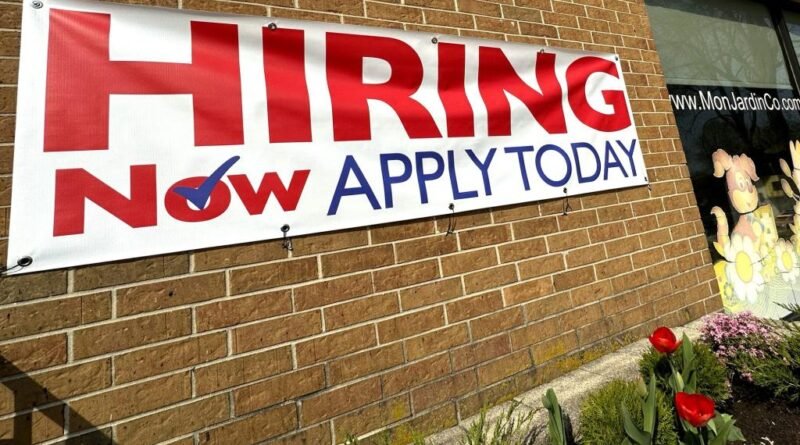Addiction and Federal Benefits Contribute to Rise in “Unemployables”

Politicians from both parties often emphasize the need to regain manufacturing jobs lost due to outsourcing.
Despite their differing ideologies, both President Joe Biden and former President Donald Trump praised infrastructure as a way to generate jobs in construction and related fields.
However, a surprising obstacle has arisen in fulfilling these goals: a shortage of workers.
When Biden’s infrastructure law was passed in November 2021, the construction industry was already struggling to fill approximately 500,000 vacant positions.
Since then, this shortage has increased by another 150,000 positions.
Additionally, despite having about 1.4 million fewer industrial jobs than two decades ago, the Labor Department estimates that manufacturers have around 750,000 unfilled positions.
The root of these shortages lies in a steady rise in the number of adult Americans who are not participating in the workforce, a figure that surged during the COVID lockdowns.
The labor force participation rate began a somewhat erratic decline after reaching a peak of 67.3% in 2000, dropping to a low of 62.4% in 2015. It further declined to just 60.8% during the pandemic.
Currently, over 100 million adults are not working or seeking work, up from around 95 million before the pandemic.
The increase in government benefits has correlated with this decline.
Two specific programs, Social Security Disability Insurance and Supplemental Security Income, are supporting more and more Americans.
The number of individuals on disability has risen from 1.5 million in 1970 to 7.6 million today, mainly due to eased medical criteria that allow more workers to qualify, especially for mental health and addiction issues.
Efforts to combat fraud in federal programs have faced challenges due to prolonged legal disputes.
Extended government benefits during the pandemic also contributed to workforce dropouts.
Government programs provided supplemental unemployment benefits and direct payments to families, which led to a higher likelihood of individuals remaining jobless the longer they were unemployed.
A mid-2022 survey by the US Chamber of Commerce revealed that nearly a quarter of unemployed respondents mentioned that government aid had discouraged them from seeking work.
Even as economies began reopening in mid-2022, two-thirds of the unemployed indicated they were only “somewhat active” or “not very active” in seeking new employment.
The social challenges intensified by the COVID lockdowns have deterred people from work, with drug use notably increasing.
Employers are understandably hesitant to hire workers with positive drug test results, as such employees are involved in more accidents, incur more injuries, and have higher absenteeism rates.
The rise in addiction rates, particularly to more harmful drugs like opioids, has further contributed to individuals exiting the job market.
A 2022 paper estimated that between 9% and 26% of those leaving the workforce during COVID did so due to some form of substance abuse.
Widespread mental health issues are also shrinking the pool of employable individuals, with a significant portion of federal disability beneficiaries being declared incapable of working due to mental health conditions.
Likewise, many young Americans have disengaged from the labor force, with a study indicating that 14% of 25-year-olds are neither employed nor seeking employment.
Research consistently shows that those engaged in work lead happier lives compared to non-workers, highlighting that the employment crisis extends beyond mere economic concerns.
What can be done to address these challenges?
Firstly, eliminating government disincentives to work is crucial.
Work requirements for government benefits have proven effective in encouraging individuals to re-enter the workforce, as seen during the successful welfare-to-work movement of the 1990s.
Moreover, early intervention initiatives could help reduce the number of individuals transitioning to permanent disability, aiding those temporarily disabled in returning to work before becoming permanently unemployed.
America’s educational system was once effective in preparing young individuals for adult life, including trade and technical careers, but the focus on college education for all has undermined these programs.
Reviving such programs, possibly in collaboration with local businesses, can produce highly skilled and well-paid young workers.
The rising use of marijuana, especially with its increasing legalization, has been linked to a notable increase in debilitating mental health issues. Revisiting lenient marijuana laws may be necessary to prevent harm.
Efforts to integrate ex-convicts into the workforce, though challenging, are worthwhile. Strategies to encourage businesses to provide opportunities for this demographic, such as offering crime and safety insurance, can help mitigate potential losses from hiring ex-convicts.
Work is deeply ingrained in the human experience, and the generations before us have left lasting legacies through their labor. America must not shy away from work, as doing so poses great risks.
Adapted from City Journal, where Steven Malanga is a senior editor.



